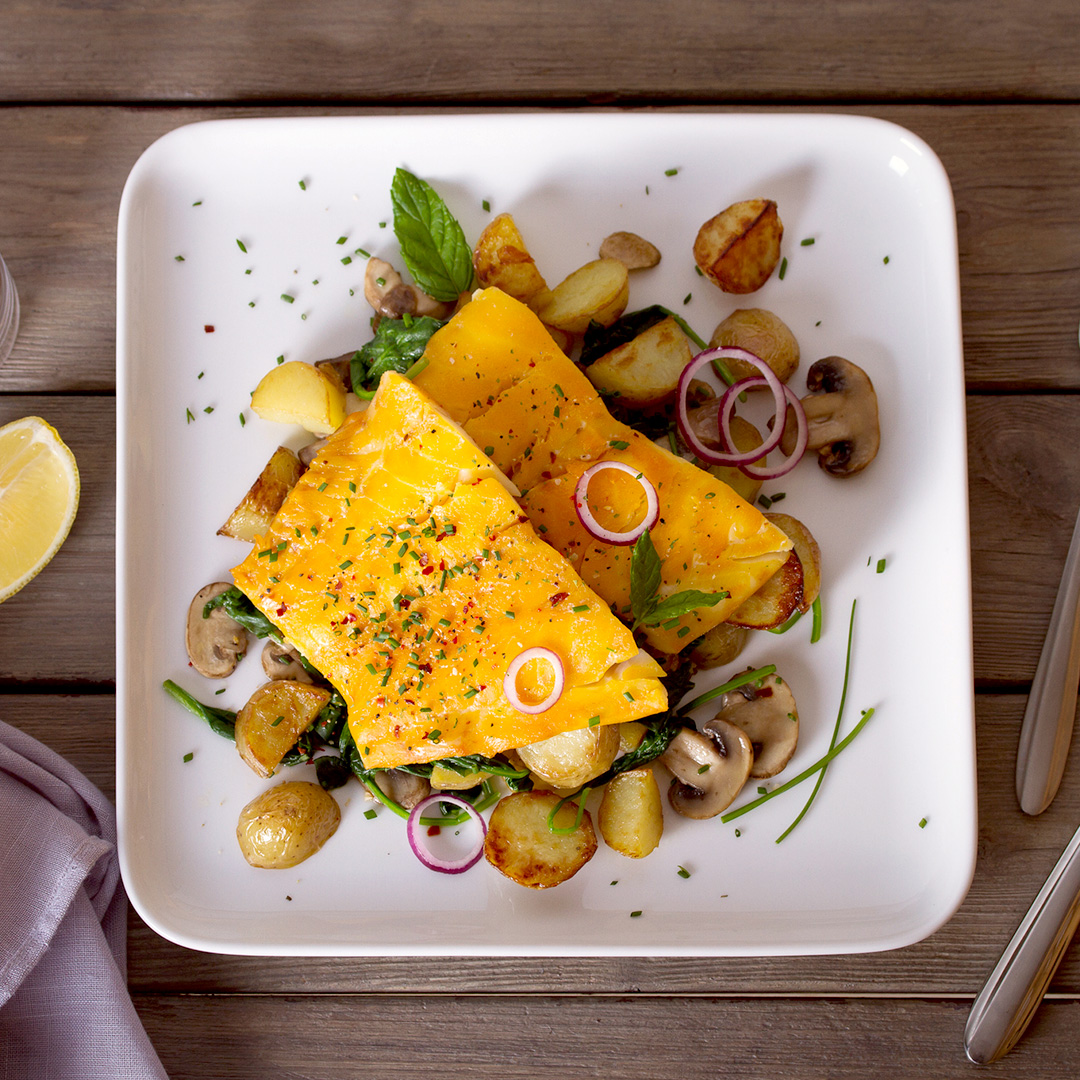Haddock
QUICK FACTS
Nutrition Value: Sodium Protein, Omega-3 fatty acids, Vitamin B12,Selenium.
Ways to cook: Bake, Pan fry, Sear, Roast, Poach,
Portion Sizes: 150-200g
Taste: Haddock is a mild, slightly sweet tasting fish without an overpowering fishy flavour. Its white flesh is lean, with low levels of oiliness, and fine flakes that are firm and tender once cooked.
Best Paired with:
- Smoked Haddock & Wild Mushroom traybake
- Roasted haddock with chorizo crust, asparagus and peppers
- Haddock & leek au gratin with Sweetcorn Mash
- Smoked Haddock & Chorizo Salad
- Breaded haddock with roasted tomatoes
- Coconut Crumbed Haddock with Sweet Chilli Slaw
- Haddock and spinach rye toasts recipe
- Crumbed haddock with asparagus salad
To Drink with Haddock: Sauvignon Blanc, Pinot Noir, Pinot Gris, Chardonnay
Best way to cook
Pan-frying: You can choose to fry your fish as is or cover it in flour or breadcrumbs. Using the extra coating will give your fish more texture and body. If you’re going to dip it in flour, soak the fish in a bowl of milk for 3 to 5 minutes, before covering it in flour or breadcrumbs. This will help the coating stick to the fish.
Get your pan ready for frying by pouring a few tablespoons of vegetable oil into it. You can also use clarified butter which will taste great on the fish. Heat the pan until the oil slides around easily. You can splatter a few drops of water in the pan – if the water sizzles, it’s ready for your fish. Place the fish flesh side down in the pan – the side you’ll be presenting to your diner (the non-skin side).
Once your fish is in the pan, slide a spatula gently underneath to prevent it from sticking. Cook the fish for 3 to 4 minutes on one side and then flip it. Fish usually cooks for 10 minutes per inch of thickness. Use a wide spatula to prevent breaking the fish. Cook for another 3-4 minutes or until the flesh turns pearly white and flakes easily with a fork. Carefully lift it out of the pan and serve immediately.
Oven baking: Baking fish in the oven enables you to control the cooking temperature and limit how much you handle the fish, preventing it from overcooking or falling apart.
Season fillets with pepper, dip in egg and coat in bread crumbs. Preheat the oven to 275°C and line a baking tray (glass or metal) with aluminium foil. Brush with olive oil.
Arrange the individual fish fillets on the baking tray in a single layer. Don’t allow the fish fillets to overlap one another. Bake in the pre-heated oven for 15 to 25 minutes or until the fish flakes easily, basting frequently with butter.
Poaching: Poaching is an easy way to cook fish quickly. First rinse the fish and pat dry with paper towels. Place the fish in a large saucepan and add enough poaching liquid to the pan to cover the fish.
The simplest is to use water as your liquid and add a little lemon juice, garlic, onions, herbs and spices. You can also use some dry white wine, vinegar, broth and milk.
Bring the poaching liquid to a simmer over medium heat and cook the fish for 10 minutes or until the center of the fish seems opaque and it flakes easily when poked by a fork.
It’s important not to bring the fish to a rolling boil – keep it at a simmer. When the fish is done, remove it from the liquid with a spatula. Serve the fish hot, out of the poaching liquid with a sauce of your choice.





